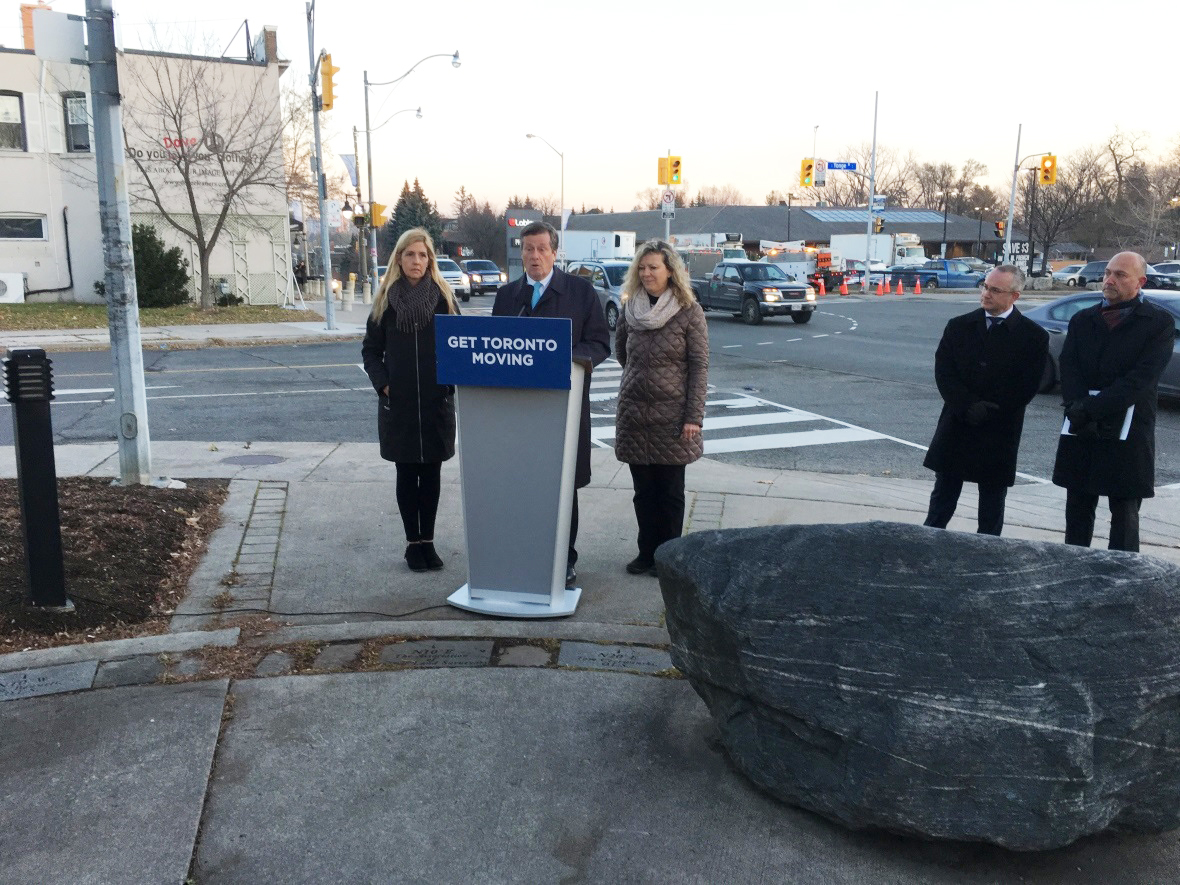
Toronto, Canada’s largest metropolis (and the fourth largest in North America), has saved its residents CAN$53 (US$42.4) for every CAN$1 (US$0.80) spent over a 2012-2016 traffic signal retiming programme, according to figures released by its Transportation Services Division. The programme covered 1,275 signals (the city’s total, at 9 January this year, was 2,346) operating along 46 corridors at a total cost of CAN$5.1 million (US$4.08 million).
Cost ratios
The annual aggregate benefit cost ratios (BCRs) have ranged from 75:1 in the first year of the programme to 33.1 in the last – yielding an estimated total BCR of 53.1 as the weighted average figure. The city also generates an individual cost-benefit analysis (CBA) for each corridor. Specific benefits achieved over the whole period, expressed as measures of effectiveness (MoEs), include a cumulative increase in average speeds of 3.9 % (1.12 km/h) across all the 46 corridors. There have also been reductions in numbers of incidents of vehicles stopping (340 million fewer); of 4.8% in fuel consumption (18.6 million litres); and of 4.7% in greenhouse gas emissions (430,000 kg). The CAN$5.1 million figure is a comprehensive one. It includes the costs of city staff, consultancy and electrical contractor personnel, data collection, the development and calibration of the necessary modelling, and the resulting calculation of the optimised signal timings, their field implementation and observation. The city is using Synchro software from US firm
Macroscopic analysis
The system is a macroscopic analysis and optimisation software application, introduced for locations, such as signalised intersections, which can use standard capacity utilisation methods. It is designed to support the US Highway Capacity Manual criteria for road junction management standards. Users enter data on relevant intersections, including their geometry, typical traffic volumes and signal timings. The system then calculates results including expected delays and queue lengths for each traffic movement, for feeding into its signal timing optimisation algorithm. A Toronto Transportation Services Division spokesperson told ITS International: “It is worth noting that all the MoEs cited, and the components of the benefit/cost ratios, have been devised through Synchro modelling since they are virtually impossible to quantify in the real world.”
Time-consuming
A key issue is cost. It can be time-consuming and labour intensive physically to measure critical factors, lane-by-lane, at each individual approach. Again, there can be the need to estimate future conditions and decide, for example, if it would be beneficial to widen a roadway. The city starts the retiming process by gathering available data for each intersection along the route being surveyed to establish the most up-to-date travel patterns. These are then processed using computer programs to generate the optimal timing plans – on both a whole-route and per-intersection basis. Traffic volume data is ideally current, gathered from the city’s Traffic Safety Unit (TSU) over a two-year span. The plans are generally formulated to suit one of six predetermined periods: morning peak, day off-peak, afternoon peak, evening off-peak, night and weekend. Signals are grouped into control areas, which are typically larger in peak periods to enable a smooth changeover between implemented plans by time of day. Additional plans can allow scope for diversions, when necessary, along routes such as Leslie Street, that run parallel to the city’s inner urban expressways. Signals on the city’s major arterials are coordinated 24 hours a day. Those on minor arterials and collectors (distributor roads) are excepted overnight - normally between 22.00 and 06.00 when there tend to be fewer vehicles on the roads and thus fewer benefits from co-ordination to the driving public overall.
Traffic congestion
A major factor driving the Toronto programme is the city’s high level of traffic congestion, with over 70% of its car owners using their vehicles to commute in preference to taking public transport. According to a 2016 study by traffic analytics company
Timing optimisation
The current commitment follows on from an earlier exercise covering traffic signal timing optimisation on seven priority corridors, designed to improve flows and reduce delays. This delivered observed benefits in the form of reductions in travel times of 5-10%. The city’s running signal optimisation programme stipulates co-ordination studies on an industry-recommended five-year cycle for major arterial roads, and a ten-year one for less important routes. (There is provision for a one-off exercise mid-cycle if part of a route is being affected by major changes in traffic volumes or land usage). The overall aim is to ensure the most efficient use of the city’s signals in shifting a typical cluster of vehicles with closely-spaced headways that are travelling in the same direction through a series of intersections at or near the speed limit. Based on the US Environmental Protection Agency’s greenhouse gas equivalencies calculator, the reduction of fuel consumption achieved by the 2012-2016 efforts equated to the CO2 sequestered by 416,753ha of trees in one year.
Signal data
Toronto’s Transportation Services Division makes its current traffic signal timing data available (for a fee) to regional transit agencies, neighbouring municipalities, academics, engineering consultants working on traffic impact studies or construction projects that need traffic modelling. In a further bid to keep its traffic moving, the city is now piloting two alternative types of responsive traffic signals designed to monitor flows and adjust to them in real time. The first uses a plug-and-play InSync system, developed by US company Rhythm Engineering, which integrates with already-installed equipment and uses mounted IP video cameras to monitor the length and duration of traffic queues at signals. The accompanying processor, located in the cabinet, then calls up the traffic signal state that will best respond to the demand and co-ordinates the result with those at other intersections. The system is Ethernet- and web-based. The second type is based on the Australian-developed Sydney Coordinated Adaptive Traffic System (SCATS), which is now in use in some 40 countries. Each installation will cost between CAN$100,000 (US$80,000) and CAN$150,000 (US$120,000) per intersection. After the pilot project concludes, the city will compare which technology has worked better.






